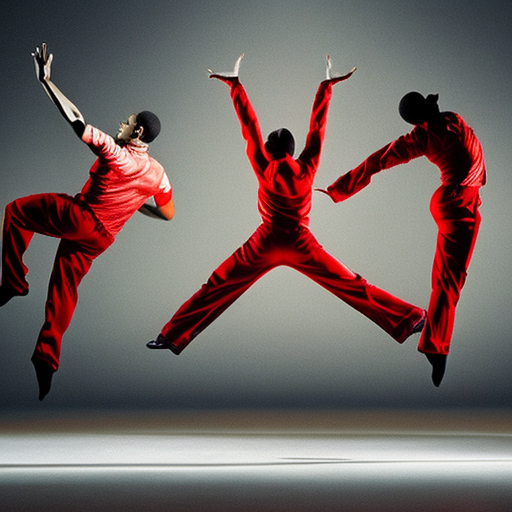Hip-Hop Dance: A Fusion of Movement and Culture
Hip-hop dance is a dynamic and energetic form of movement that originated in African American and Latino communities in the 1970s. It encompasses a wide range of styles, including breaking, popping, locking, and krumping, and has become a global phenomenon, influencing popular culture and dance styles worldwide.
Origins and Influences
Hip-hop dance emerged as a response to the social and cultural conditions of urban communities in New York City. It was heavily influenced by the music and culture of the time, particularly funk, soul, and disco. African and Caribbean dance traditions also played a significant role in shaping the movement vocabulary of hip-hop dance.
Breaking, also known as b-boying or breakdancing, is one of the foundational styles of hip-hop dance. It originated in the Bronx and is characterized by acrobatic moves, intricate footwork, and dynamic freezes. Popping and locking, on the other hand, developed on the West Coast and involve isolations, robotic movements, and rhythmic contractions and releases.
Elements and Techniques
Hip-hop dance is characterized by its improvisational nature, allowing dancers to express their individuality and creativity. It incorporates a variety of elements and techniques, including:
1. Isolations: The ability to move specific body parts independently, such as popping the chest or isolating the shoulders.
2. Footwork: The intricate and fast movements of the feet, often performed close to the ground, that create rhythmic patterns and dynamics.
3. Breaking: The combination of power moves, freezes, and intricate footwork that define this style.
4. Freestyle: The ability to improvise and create movements on the spot, responding to the music and the energy of the moment.
5. Flow: The smooth and seamless transitions between movements, creating a sense of continuity and fluidity.
6. Expression: The use of facial expressions, gestures, and body language to convey emotions and tell a story through movement.
Influence on Popular Culture
Hip-hop dance has had a profound impact on popular culture, influencing music videos, commercials, movies, and fashion. It has become a global phenomenon, with dance crews and competitions showcasing the talent and creativity of hip-hop dancers from around the world.
The rise of hip-hop music in the 1980s and 1990s further propelled the popularity of hip-hop dance. Artists like Michael Jackson, Janet Jackson, and Usher incorporated hip-hop dance elements into their performances, bringing it to a wider audience.
Television shows like “So You Think You Can Dance” and “America’s Best Dance Crew” have also played a significant role in popularizing hip-hop dance and showcasing its diversity and innovation.
Community and Empowerment
Hip-hop dance has always been deeply rooted in community and self-expression. It provides a platform for marginalized voices to be heard and celebrated. Dance battles and cyphers, where dancers gather to showcase their skills and compete, are an integral part of hip-hop dance culture.
Hip-hop dance has also been used as a tool for social change and empowerment. Organizations like Dance 4 Peace and Hip Hop 4 Hope use dance as a means to promote peace, unity, and social justice.
The Future of Hip-Hop Dance
As hip-hop dance continues to evolve, it embraces new influences and fuses with other dance styles. Contemporary hip-hop, for example, combines elements of modern dance and ballet with hip-hop techniques, creating a unique and dynamic movement vocabulary.
The accessibility of hip-hop dance through online platforms and social media has also contributed to its continued growth and popularity. Dancers can now connect and share their work with a global audience, inspiring and influencing each other across borders.
In conclusion, hip-hop dance is a vibrant and influential form of movement that has its roots in African American and Latino communities. It encompasses a wide range of styles and techniques, and its impact on popular culture and social empowerment cannot be overstated. As it continues to evolve and adapt, hip-hop dance remains a powerful expression of creativity, individuality, and community.












